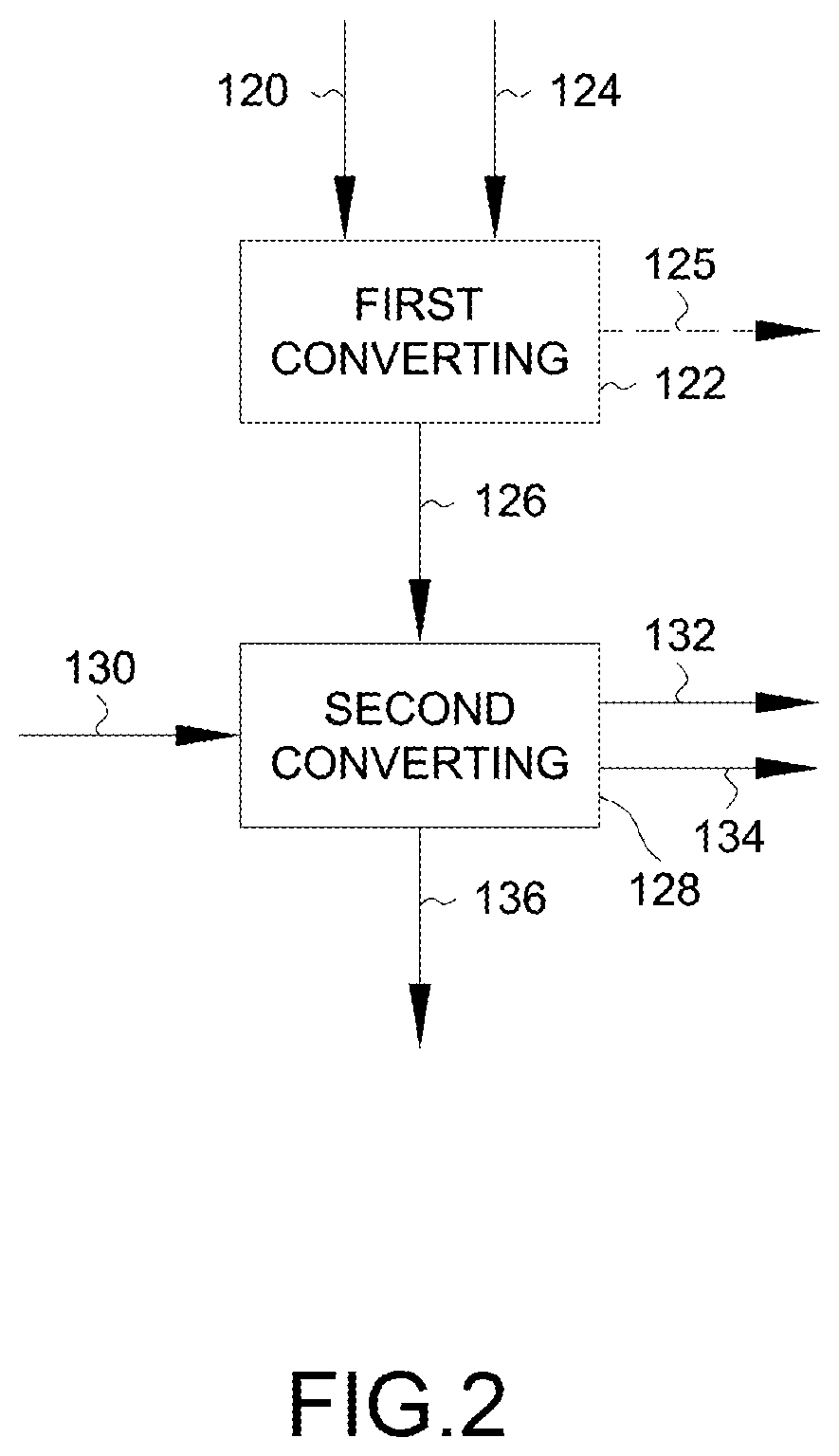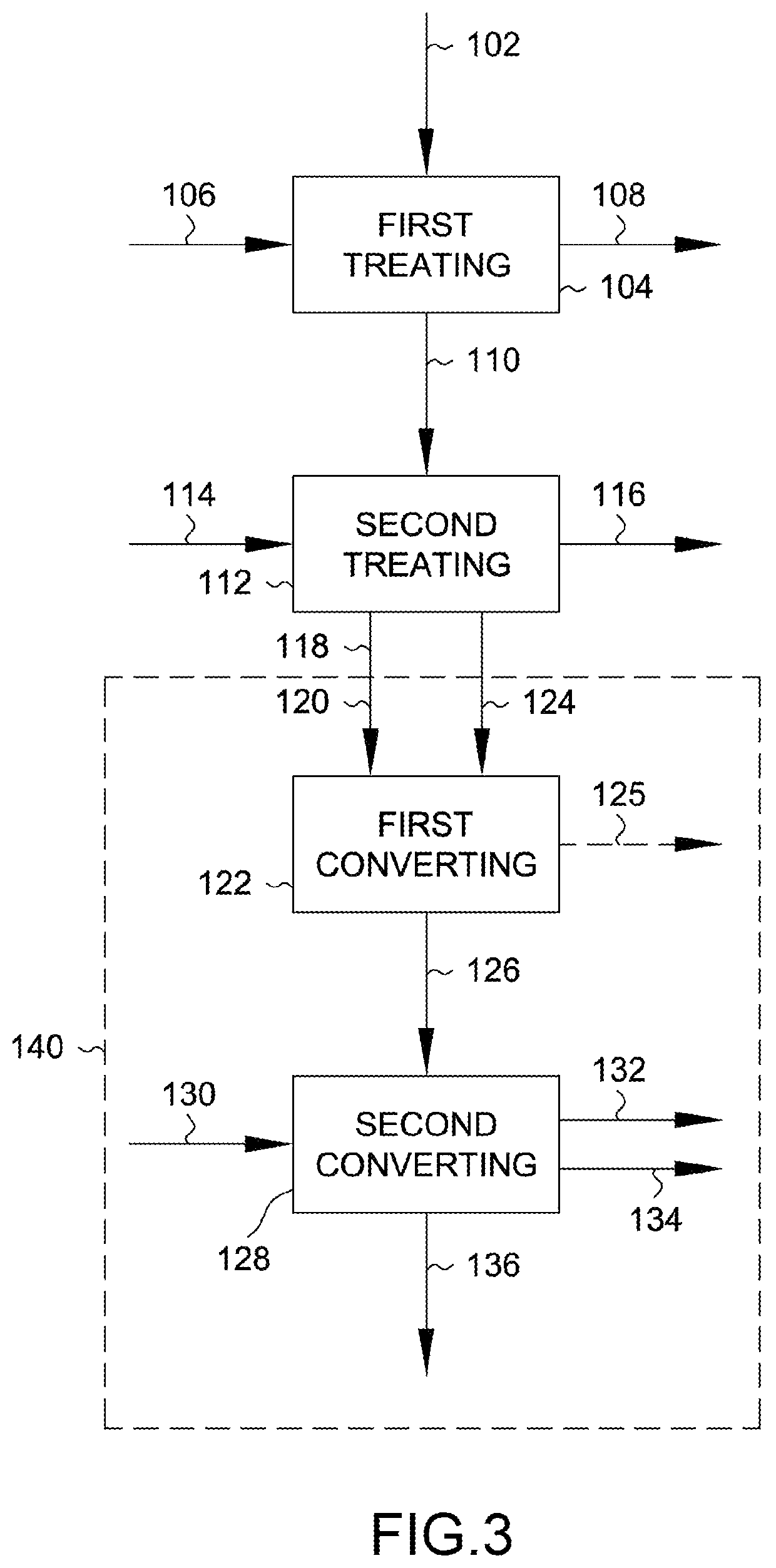Cosolvent processing of reinforcing fiber-containing products for recycling reinforcing fibers
a technology of cosolvent processing and reinforcing fibers, which is applied in the field of cosolvent processing of reinforcing fibercontaining products for recycling reinforcing fibers to achieve the effect of reducing the pressure of the rich cosolvent composition
- Summary
- Abstract
- Description
- Claims
- Application Information
AI Technical Summary
Benefits of technology
Problems solved by technology
Method used
Image
Examples
embodiment 200
[0109]For instance, with further reference to FIG. 5, an embodiment 200 for processing continuous fiber-reinforced composite 102 may include transferring the fiber-reinforced composite 102 from a source spool 202 to a second spool in the form of a destination spool 204. The destination spool 204 and / or the manner in which the continuous fiber-reinforced composite 102 is wound about the destination spool 204 may assist in facilitating processing of the continuous fiber-reinforced composite 102 on the destination spool 204. For instance, the source spool 204 may be a spool about which the fiber-reinforced composite 102 was provided for use in a manufacturing process. In this regard, the source spool 202 may be a cellulose-based material such as a paper-based spool that may include reinforced paperboard, cardboard, or the like. Such spool material may not provide desirable mechanical properties when exposed to the solvent-based processing described herein (e.g., the spool material may ...
embodiment 232
[0124]While the source spool 202, and one or more second spools, for example intermediate spool 206 and / or destination spool 204 may be disposed partially or entirely within the cosolvent composition bath 228 and / or second solvent composition bath 230 for the respective first treating 104 and / or second treating 112, a portion of the web 222 alone may contact the respective solvent bath as show in in FIGS. 10 and 11. FIGS. 10 and 11 depict an alternative embodiment 232 which utilizes a roller 234 to contact and guide the web 222 into either the cosolvent composition bath 228 or the second solvent composition bath 230 for the respective first treating 104 and second treating 112. In this regard, the spools between which the fibers are transferred may be provided within the vapor space 226 of the vessel 226 to isolate the spools from the solvent baths. As such, the first treating 104 and / or second treating 112 may occur only with respect to the portion of the web 222 that follows the p...
embodiment 236
[0125]With further reference to FIGS. 12 and 13, another embodiment 236 is depicted in which a web 222 extending between spools may be exposed to respective solvents of the first treating 104 and second treating 112 by a continuous spray 238 of the respective solvent. That is, the web 222 may be sprayed by a sprayer 238 with a spray of the cosolvent composition 106 when being transferred between the source spool 202 and the intermediate spool 206 as shown in FIG. 12. In turn, rich cosolvent composition 108 may be recovered from the vessel 224. As shown in FIG. 13, upon transferring the web 222 between the intermediate spool 206 and the destination spool 204, the second solvent composition 114 may be sprayed on the web 222 by the sprayer 238 to contact the web 222. As may be appreciated, the sprayer 238 may provide sufficient flow to effectively contact the web 222 for sufficient solvent contact for either the first treating 104 or the second treating 112.
[0126]In this regard, rather...
PUM
| Property | Measurement | Unit |
|---|---|---|
| weight percent | aaaaa | aaaaa |
| temperature | aaaaa | aaaaa |
| pressure | aaaaa | aaaaa |
Abstract
Description
Claims
Application Information
 Login to View More
Login to View More - R&D
- Intellectual Property
- Life Sciences
- Materials
- Tech Scout
- Unparalleled Data Quality
- Higher Quality Content
- 60% Fewer Hallucinations
Browse by: Latest US Patents, China's latest patents, Technical Efficacy Thesaurus, Application Domain, Technology Topic, Popular Technical Reports.
© 2025 PatSnap. All rights reserved.Legal|Privacy policy|Modern Slavery Act Transparency Statement|Sitemap|About US| Contact US: help@patsnap.com



